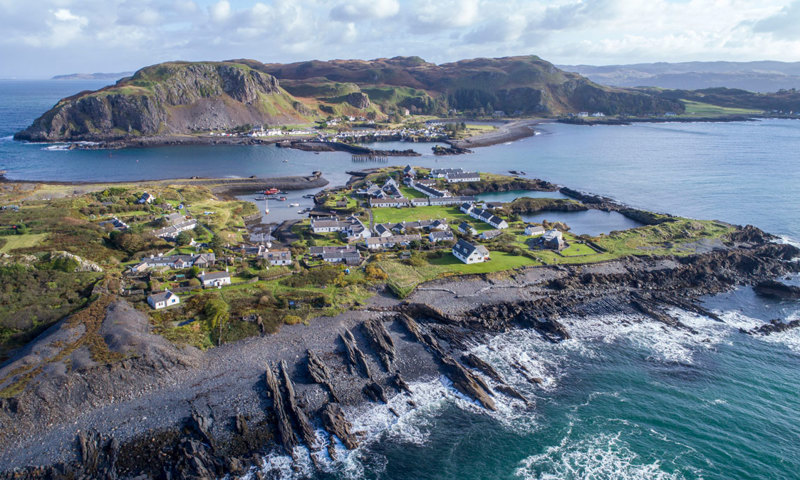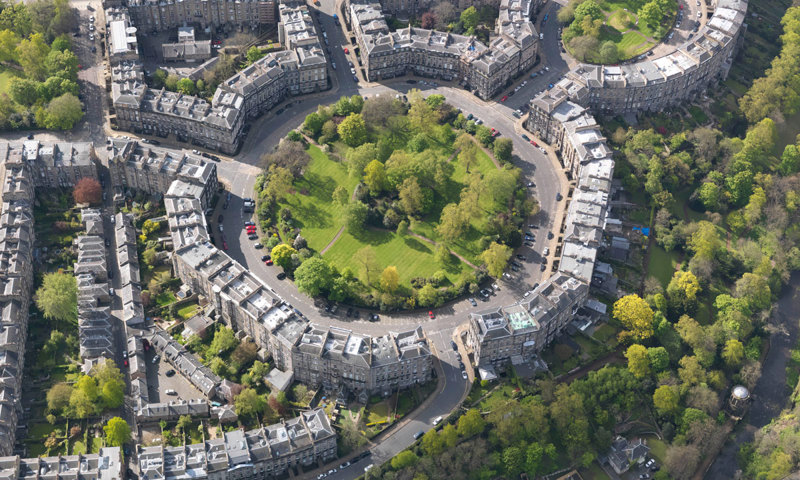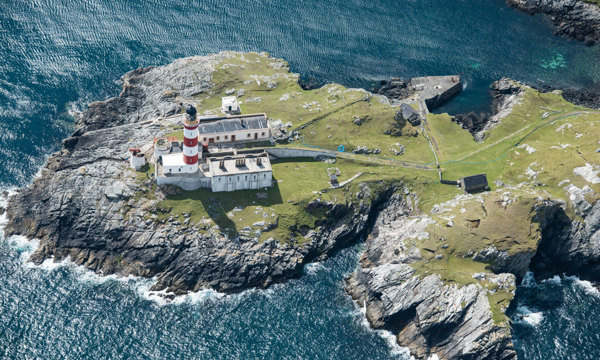Historic Environment Scotland (HES), as lead of the Our Place in Time (OPiT) Climate Change Working Group, brought together sector partners to launch the Guide to Climate Change Impacts at Glasgow’s City Chambers.
The guide aims to raise awareness of the risks and hazards of climate change - such as increased rainfall, soaring temperatures, rising sea levels and shifting coasts - and their physical impact on the historic environment throughout Scotland. This information will empower owners and stewards of historic sites, as well as local communities, to help develop and implement adaptation measures to enhance resilience to climate change.

Coastal areas like Easdale are among the elements of the historic environment identified at risk in the new guide, which proposes actions on adapting to the impacts of climate change.
Identifying seven elements of the historic environment – roofed buildings and infrastructure; gardens and designed landscapes; marine; coastal; surface remains; buried remains and collections and internal fabrics – the guide explores the different hazards that threaten these sites. To help users assess risk, the guide also outlines the features that make a historic site more or less resilient to these impacts – for example, whether a building is in a good state of maintenance or repair.
The guide is the first of its kind and has been produced collaboratively with partners from across the historic environment sector and beyond, including heritage trusts, tourist bodies, universities and religious organisations, as well as climate change specialists.
Hazel Johnson, OPiT Project Manager for Built Heritage and Climate Change at HES, said:
"The rate of change to Scotland’s climate is already having profound impacts across all aspects of society, and poses real concerns for the future.
Scotland’s historic environment is particularly vulnerable to the impacts of climate change, from sites in exposed coastal locations at risk from erosion, to stonework suffering accelerated decay caused by increasing rainfall.
"But our historic places also offer a unique perspective on how humans have adapted to changes in their environment over hundreds and even thousands of years, and they have an important role to play in creating sustainable and resilient communities across the country.
"To achieve this, it’s essential we work together, and we’re pleased that this guide has been the product of real cross-sector collaboration, pooling and sharing experience and expertise from a range of organisations.
"The publication of the Guide to Climate Change Impacts is an important milestone for the historic environment sector in Scotland, and we look forward to seeing its use and development in the future."

Public buildings, rural cottages and city tenements, as well as infrastructure like roads, bridges and canals, are included within the guide.
Ruth Wolstenholme, Managing Director of Sniffer, who deliver the Adaptation Scotland programme, said:
"Adaptation Scotland welcomes the timely publication of this guide. We commend the extent to which it builds on a comprehensive understanding of the impacts of a changing climate and their significance for the historic environment.
In setting out this information in a clear and systematic way, the guide has a vital role to play in raising awareness of climate change for all those involved in the sector."
"Importantly, it also identifies adaptation responses without being prescriptive, encouraging decision makers to work together to manage Scotland’s heritage in ways that are most effective. This approach places the sector at the forefront as climate leaders and we hope it will inspire other sectors to produce similar joint resources."
Download the guideAbout Historic Environment Scotland (HES)
- We are the lead public body charged with caring for, protecting and promoting the historic environment. We will lead on delivering Scotland’s first strategy for the historic environment, Our Place in Time.
- Historic Scotland, Scran, Canmore, The National Collection of Aerial Photography (NCAP), The Engine Shed, Stirling Castle and Edinburgh Castle are sub-brands of HES.
- View our press pack and keep up to date by registering for media release email alerts. If you wish to unsubscribe, please contact us.
Follow Historic Environment Scotland
Twitter: @HistEnvScot | @welovehistory
Facebook: @HistoricEnvScotland | @VisitHistoricScotland
Instagram: @HistEnvScot | @historicscotland
For further information, please contact:
Claire Mullaney
Historic Environment Scotland Media Office
Direct line: 0131 668 8588
Mobile: 07881 512 379
Email: communications@hes.scot

